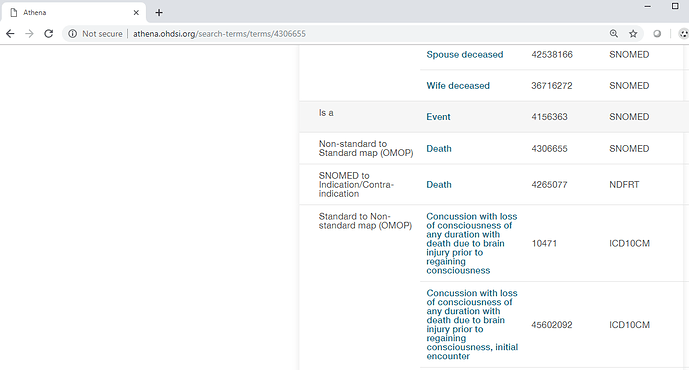Death is a VERY important outcome to track. But one with a lot of issues around it. Often, there can be a big delay in learning about death outside hospital or outside other institution (outside nursing home).
For a sensitivity analysis, it may be important to know the breakdown of death-within-hospital-or-institution and death-at-home (or perhaps death-outside-an-institution). From data quality point of view, we anticipate missing data for death-outside-an-institution. Knowing that death-within-institutions agree with the expectation provides insights into data quality. (are there still missing deaths if only considering death-within-institution?)
In v6, Death Types were made Condition Types. (see query here for relevant condition types: Athena )
In absence of a specific field that would say LOCATION _OF_DEATH, we hope to only ascertain somehow death-within-hospital-or-institution from claims data. (if that is possible at all; perhaps using Condition Code in the Header or Detail information of claims). In other words, the OMOP query should replicate what is stated here Where people die - PubMed and here https://palliative.stanford.edu/home-hospice-home-care-of-the-dying-patient/where-do-americans-die/.
Here is our US-based question for medical coders or users of claims data out there:
What is the in-hospital death code we can search for in OMOPed data? (I am afraid it is not a simple ICD or CPT code; or is it?)
p.s.
(relevant death discussion here Store death causes in condition_occurrence table · Issue #210 · OHDSI/CommonDataModel · GitHub)
There seem to be no ICD9CM codes mapped to THE DEATH SCT CODE (Athena). From where comes the existing list of ICD10CM codes and is it complete? (think “validation of death-via-claims phenotype”)

